
Soil Moisture Permeation
Irrigation Moisture
Depth & Distribution
Irrigation Moisture
Depth & Distribution
Garden Tip
TB1116
TB1116
Technical Bulletin Series

|
Soil Moisture Permeation Irrigation Moisture Depth & Distribution |
Garden Tip TB1116 |
Technical Bulletin Series
|
|
Understanding Added moisture depth
When considering soil that is under routine irrigation for the purpose of
plant growth, whether it is agriculture or horticulture (ornamental plants),
we need to perform detailed inspection of the soil composition and the moisture
within that soil where the plant roots will be growing.
In climates where rainfall is sufficient for plant growth throughout the year, these considerations are not nearly as important as in climates where for much of the year, desirable plant life would perish if not for irrigation. |
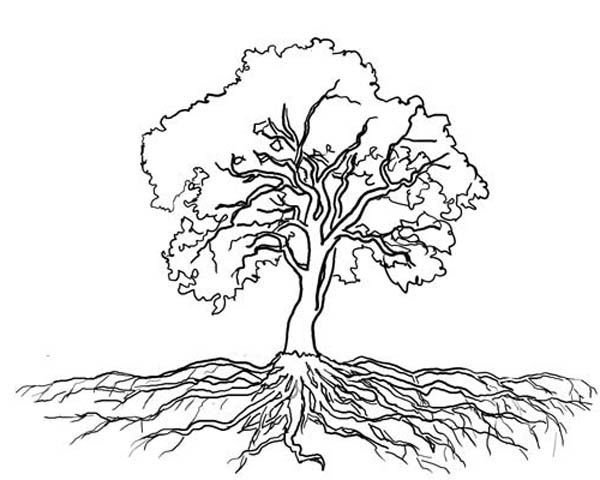 What the Tree wants |
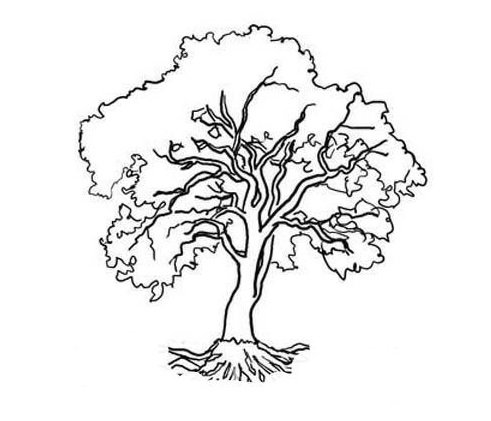 Too often what the Tree gets |
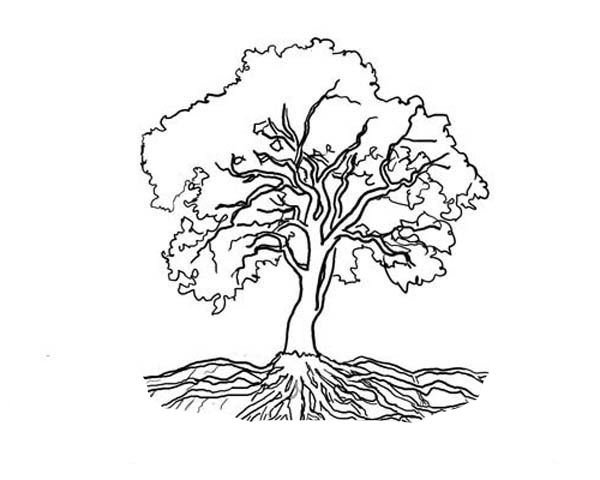 What the Tree needs! |
Depending on the plant type and size, the depth of its root system varies.
Due to wind, larger shrubs and trees need deeper and wider root systems in order
to both anchor them and nourish them. For many residential situations a root zone
depth of between 6 and 15 inches will adequately support most shrubs and trees.
Due to the cost and scarcity of water, current irrigation practice does not afford only watering the surface where evaporation is high, or simply pushing water as deeply as possible. Instead, best practices recommend watering slowly, in order to allow depth of permeation. |
|
For many years, terms for discussing water movement through soil such as:
infiltration and percolation were based on measuring the rate at which a volume
of water would enter into the soil. For the purpose of irrigating soil in a dry
climate I prefer to evaluate the depth of soil that moisture permeates or penetrates.
For instance, the measurement of just how deep new moisture permeates into the soil will tell us whether there has been enough moisture ADDED to create favorable conditions for a root system that will support the particular plants in question. |
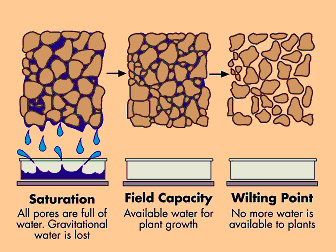
|
|
There are a few very important terms to know when understanding soil moisture.
Saturation is that point where the moisture in the soil begins exceeding the
maximum it can hold. At this point available moisture will continue downward,
pulled by gravity until the moisture level reaches "Field Capacity".
At Field Capacity the water no longer travels down pulled by gravity, but has reached an equilibrium point between its adhesion force to the soil and gravity. The Wilting Point of moisture is is where the level is so low that the plants will not have enough energy to pull this water into their root systems. When this happens, they will wilt - then ultimately fail. The level of moisture between Saturation and Wilting called Field Capacity is also known as Available Water, and is the moisture region at which plants prefer to live. |
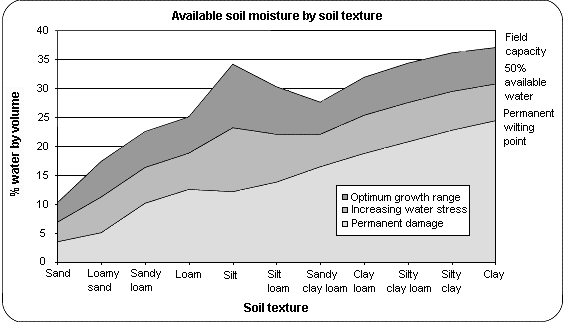
|
|
As you can see by this graphic the percent of water for the three primary conditions
within the soil varies for the various types of soil. When soil is saturated
with more moisture than it can hold a Field Capacity, plants suffer from lack
of oxygen. When we allow moisture levels to go below the Available range,
plants suffer from drought.
Applying too much water during a single irrigation, may waste water, but if enough time is given for the soil drain and then to spend adequate time in the Available region, the plants will be ok. If we fail to apply enough water for it to penetrate to the depth that the root system requires, the plants will decline or fail. Through many years and hundreds of on-site garden consultations I found shallow and scattered roots to be the primary cause of plant health issues. It is because of this, that understanding DEPTH of PERMEATION becomes one of the most critical aspects of proper irrigation. |

|
|
In the Garden Galaxy Soil-Flow Pro-I, You will find Moisture Permeation analyzed and reported!
What parameters are used
to determine Depth of Moisture?
The factor of "Water Held per inch of Soil" [WHI] will determine
how deep the moisture can permeate. When the amount of water applied
equals the volume of soil needed to hold that water, equilibrium
is reached, and downward movement is negligible.
Sandy soil doesn't hold water, yet clay does.
The problem with clay is that it resists water movement, which is required in order to reach deeper into the soil. Water applied at a rate in excess of the [HCR] of a soil, will result in a distortion of moisture pattern. The pattern becomes more flattened as the applied rate continues to exceed HCR.
Good loamy soil is the best of both extremes.
Determining the ultimate moisture depth then requires an analysis
of both [WHI] and [HCR]. Initially WHI is used in the analysis, and then
that is adjusted according to HCR. This provides an accurate
prediction of moisture depth, based on soil composition and the amount & rate
of water applied.
|
|
Adequate Moisture Depth & Distribution are the most Critical Factors for long term plant health and vitality
The factors required to anticipate the depth of moisture from irrigation
are derived from soil composition, quanitity of water and application
(or run) time. It then becomes practical to achieve the depth of moisture permeation indicated by following the irrigation run time in addition to the quantity and spread of emitters specified.
A Key Point to keep in mind is: IRRIGATION WATERS THE SOIL NOT THE PLANT.
Of course, it is the plant that ultimately, we are in fact watering, but if our focus is not on the soil,
we will fail to provide the soil moisture conditions that the plant requires.
|